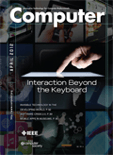
COMPUTER
Scope & Guideline
Transforming Ideas into Impactful Research in Computer Science.
Introduction
Aims and Scopes
- Artificial Intelligence and Machine Learning:
The journal focuses extensively on the development, application, and implications of AI and ML technologies, including their ethical considerations, governance, and real-world applications across various domains. - Cybersecurity and Privacy:
Research on cybersecurity threats, defense mechanisms, and privacy-preserving technologies is a core area of the journal, addressing the growing concerns surrounding data security in a digital world. - Human-Computer Interaction (HCI):
HCI is a significant theme, emphasizing user-centered design, usability challenges, and the impact of technology on user experience across different applications. - Emerging Technologies:
The journal explores cutting-edge technologies such as blockchain, quantum computing, and the Internet of Things (IoT), highlighting their potential impacts on society and industry. - Computing Education and Workforce Development:
An important aim of the journal is to discuss educational practices, curricula development, and the future workforce needs in the computing field, emphasizing diversity and inclusion. - Sustainability and Ethical Computing:
The journal promotes discussions on sustainability in computing practices, the environmental impacts of technology, and ethical considerations in the development and deployment of computing systems.
Trending and Emerging
- Generative Artificial Intelligence:
There is a significant rise in research related to generative AI, exploring its applications, ethical implications, and transformative potential across various industries. - AI Ethics and Governance:
Emerging discussions around the ethical implications of AI technologies and frameworks for governance are becoming increasingly prevalent, reflecting societal concerns about the impact of AI. - Cyber-Physical Systems:
Research on cyber-physical systems is gaining momentum, focusing on the integration of computing with physical processes, particularly in areas like smart cities and autonomous systems. - Data Privacy and Security:
With increasing data breaches and privacy concerns, papers discussing innovative approaches to data privacy, security frameworks, and compliance measures are trending. - Sustainable Computing Practices:
An emerging focus on sustainability in computing practices is evident, with researchers exploring ways to reduce the environmental impact of technology and promote green computing initiatives. - Interdisciplinary Approaches to Computing:
The journal is seeing a rise in interdisciplinary research that combines computing with fields such as healthcare, education, and social sciences, highlighting the broad applications of computing technologies.
Declining or Waning
- Traditional Software Engineering Practices:
The journal has seen a decrease in papers focused solely on traditional software engineering methodologies, as newer approaches and integration with AI and agile practices gain prominence. - Hardware-Centric Discussions:
There is a noticeable decline in discussions centered exclusively on hardware technologies, as the focus shifts towards software-driven solutions and integrated systems. - Telecommunication Technologies:
Papers specifically addressing telecommunication technologies and their standalone applications have become less frequent, possibly due to the emergence of more integrated approaches involving IoT and AI. - Legacy Systems and Maintenance:
Research centered on legacy systems and their maintenance challenges is receiving less attention, as the industry moves towards modern architectures and cloud-based solutions. - General Computing History:
While historical reflections are still included, the frequency of papers solely focused on the history of computing has diminished, as contemporary and future-oriented research takes precedence.
Similar Journals
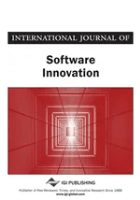
International Journal of Software Innovation
Driving Change Through Software Research and Collaboration.The International Journal of Software Innovation, published by IGI Global, serves as a crucial platform for disseminating cutting-edge research in the field of software engineering and innovation. With its ISSN 2166-7160 and E-ISSN 2166-7179, this journal has a broad scope that encompasses multiple areas of computer science, including Artificial Intelligence, Computer Graphics and Computer-Aided Design, Computer Networks and Communications, Software, and Computer Science Applications. Since its inception in 2017 and continuing until 2024, the journal has established itself in Q4 quartiles across various categories, reflecting both emerging trends and foundational principles in software innovation. Although it does not currently follow an Open Access model, its findings are vital for researchers, professionals, and students aiming to understand and contribute to the evolving landscape of software technologies. Located in the United States at 701 E Chocolate Ave, Ste 200, Hershey, PA 17033-1240, this journal not only offers research insight but also encourages collaboration and knowledge sharing among scholars worldwide.

NEW GENERATION COMPUTING
Advancing the Frontiers of Computing KnowledgeNEW GENERATION COMPUTING is a prominent academic journal published by SPRINGER, specializing in the dynamic fields of Computer Networks, Hardware and Architecture, Software Engineering, and Theoretical Computer Science. With a commitment to disseminating high-quality research since its inception in 1983 and extending its coverage to 2024, this journal occupies a vital role in advancing knowledge and innovation within these critical domains. Holding prestigious Q2 rankings in Computer Networks and Communications, Hardware and Architecture, and Software, as well as a Q3 ranking in Theoretical Computer Science for 2023, NEW GENERATION COMPUTING attracts significant contributions from scholars and professionals around the globe. Researchers will find its rigorous peer-review process ensures the publication of impactful studies, while students gain access to cutting-edge research that shapes contemporary computing practices. Though it does not offer open access, the journal remains an invaluable resource in the academic community, fostering collaboration and dialogue among experts aiming to push the boundaries of technology.
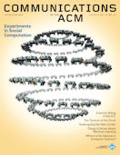
COMMUNICATIONS OF THE ACM
Advancing the Frontiers of Computer ScienceCOMMUNICATIONS OF THE ACM, an esteemed journal published by the Association for Computing Machinery, has been at the forefront of the field of computer science since its inception in 1958. With an impressive impact factor and recognized as a top-tier Q1 journal in its category, it is currently ranked 10th out of 232 journals in the general computer science category according to Scopus rankings. This journal provides a vital platform for researchers, professionals, and students to disseminate innovative ideas and advancements across various domains of computing. Although it does not offer open access, the journal remains accessible through institutional subscriptions, furthering its reach and influence within the academic community. As researchers continue to explore the rapid evolution of technology, COMMUNICATIONS OF THE ACM serves as an essential resource for high-quality research, fostering knowledge advancements and collaborative discourse within the ever-expanding world of computer science.
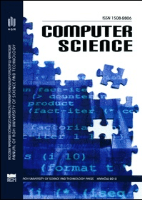
Computer Science-AGH
Catalyzing Academic Growth in Computer ScienceComputer Science-AGH, published by the AGH University of Science & Technology Press in Poland, is an esteemed open access journal that has been disseminating high-quality research since 2004. With ISSN 1508-2806 and E-ISSN 2300-7036, this journal focuses on a diverse range of areas within the computer science discipline, including but not limited to Artificial Intelligence, Computational Theory, Computer Graphics, and Networks. While it currently holds a Q4 ranking across several categories as of 2023, it actively promotes research that contributes to the academic community's understanding and evolution in the field. The journal's commitment to open access ensures that vital research is accessible to a wider audience, fostering collaboration and innovation. With its comprehensive focus and strategic publication goals, Computer Science-AGH plays a crucial role in advancing the frontiers of computer science research and education, making it an invaluable resource for researchers, professionals, and students alike.

Human-centric Computing and Information Sciences
Unlocking Potential in Human-Computer InteractionHuman-centric Computing and Information Sciences, published by the Korea Information Processing Society, represents a leading platform in the field of computer science, particularly focusing on the interaction between humans and computational systems. With an impressive Q1 ranking in the 2023 category of Computer Science (miscellaneous) and a commendable Scopus rank of #14/232 (94th percentile), this journal has established itself as a cornerstone for researchers and practitioners dedicated to advancing understanding in this vital area. Understanding the significance of making technology more accessible and effective for users, the journal has been an Open Access publication since 2011, promoting wide dissemination of knowledge without barriers. The journal's scope encompasses innovative methodologies, user experience design, and the integration of human factors into computing environments, making it essential reading for anyone interested in the intersection of technology and society. With all articles freely accessible, the journal not only contributes to scholarly discourse but also encourages collaboration among researchers worldwide, fostering further advancements in human-centric computing.

Computers
Exploring Networks and Communications for TomorrowComputers is a leading journal published by MDPI, dedicated to advancing research in the fields of computer networks and communications, as well as human-computer interaction. Since its inception in 2012, it has established itself as a vital resource for scholars and practitioners, achieving an impressive Q2 ranking in Computer Networks and Communications and a Q3 ranking in Human-Computer Interaction as of 2023. The journal is indexed in Scopus, highlighting its relevance with a rank of #135/395 and #72/145 in their respective categories. Published in Switzerland, this open-access journal ensures widespread dissemination of research findings, supporting the global academic community in enhancing technologies relevant to computer science. Access options are available, fostering an environment where knowledge is shared freely. With an emphasis on innovation, redesign, and collaboration between humans and technology, Computers plays a crucial role in shaping the future of digital interactions.
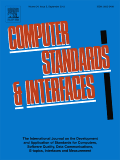
COMPUTER STANDARDS & INTERFACES
Connecting Technology, Law, and Standards for Tomorrow's Innovations.COMPUTER STANDARDS & INTERFACES is a prestigious journal published by Elsevier, dedicated to the intersection of technology, law, and standards in computing. With an impressive impact factor and categorized in the Q1 quartile across several relevant fields, including Computer Science Applications, Hardware and Architecture, and Software, this journal has established itself as a critical resource for researchers and professionals alike. Covering a comprehensive range of topics over its converged years from 1986 to 2025, it provides rigorous peer-reviewed articles and vital insights into the evolving landscape of computer standards. The journal's Scopus rankings affirm its significance with top percentiles in multiple categories, including a remarkable 12th rank in Social Sciences and Law. COMPUTER STANDARDS & INTERFACES welcomes contributions that push the boundaries of knowledge and foster discussions on best practices and innovations, making it an invaluable platform for students and seasoned researchers passionate about advancing the field.

JOURNAL OF SUPERCOMPUTING
Illuminating the Future of Computer ScienceJOURNAL OF SUPERCOMPUTING is a premier academic journal published by SPRINGER, situated in the Netherlands, that has made significant contributions to the fields of computer science, particularly in hardware and architecture, information systems, software, and theoretical computer science. With a robust publication history spanning from 1987 to 2024, this journal has cultivated a strong reputation, evidenced by its Category Quartiles ranking in the Q2 category across multiple relevant domains in 2023. The journal's Scopus rankings further underscore its influence, boasting a 78th percentile in mathematics and theoretical computer science, revealing the high quality of research disseminated within its pages. As vital discourse unfolds in the realm of supercomputing—where innovative techniques and technologies rapidly evolve—this journal serves as a crucial platform for researchers, professionals, and students to explore cutting-edge studies and build upon the foundations of knowledge in this dynamic field.
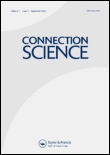
CONNECTION SCIENCE
Unlocking New Dimensions in Connection ScienceCONNECTION SCIENCE, published by Taylor & Francis Ltd, is a premier open-access journal in the fields of Artificial Intelligence, Human-Computer Interaction, and Software Engineering, with an impressive history dating back to 1989. With an aim to foster innovative research and breakthroughs, this journal serves as a vital platform for scholars and practitioners seeking to publish and disseminate their findings. As of 2023, CONNECTION SCIENCE proudly holds a Q2 ranking in all three categories, reflecting its significance and influence within the academic community, supported further by robust Scopus rankings placing it in top percentiles across the disciplines. In addition to its extensive service to the global research community, it has transitioned to open access since 2022, enhancing the accessibility of high-impact research to a wider audience. For anyone involved in these dynamic fields, CONNECTION SCIENCE is crucial for keeping up with trends, theories, and practical applications that drive the future of technology and artificial intelligence.

INFORMATION AND SOFTWARE TECHNOLOGY
Advancing the Frontiers of Software and Information TechnologyINFORMATION AND SOFTWARE TECHNOLOGY, published by Elsevier, is a leading journal that stands at the forefront of the fields of software engineering, information systems, and computer science applications. Since its inception in 1970 and with a focus extending to 2025, this esteemed publication has made significant contributions to the discourse on technological advancements and innovations. In 2023, it has achieved a remarkable Q1 categorization across multiple domains, including Computer Science Applications, Information Systems, and Software, reflecting its excellence and relevance in the academic community. With Scopus rankings that place it in the top percentiles in its categories (85th, 83rd, and 83rd respectively), the journal serves as an essential platform for researchers, professionals, and students eager to disseminate and engage with cutting-edge research and developments. While it does not currently offer Open Access options, the knowledge curated within its pages remains invaluable for advancing the fields of information technology and software development.